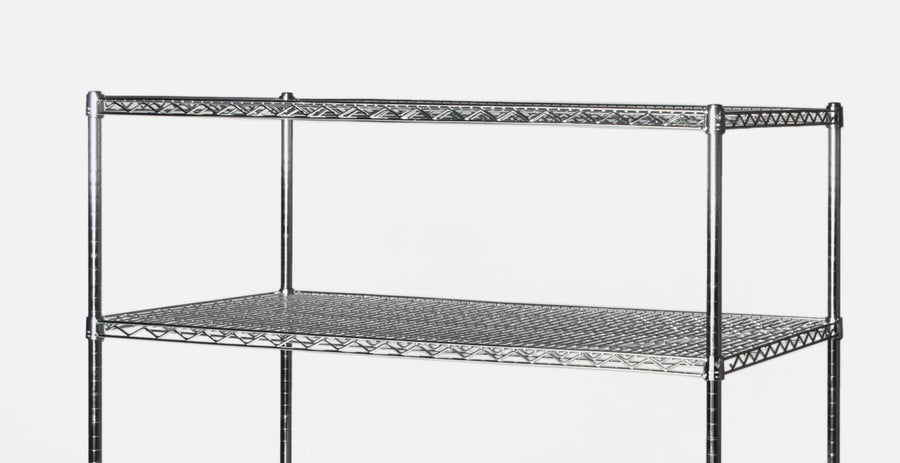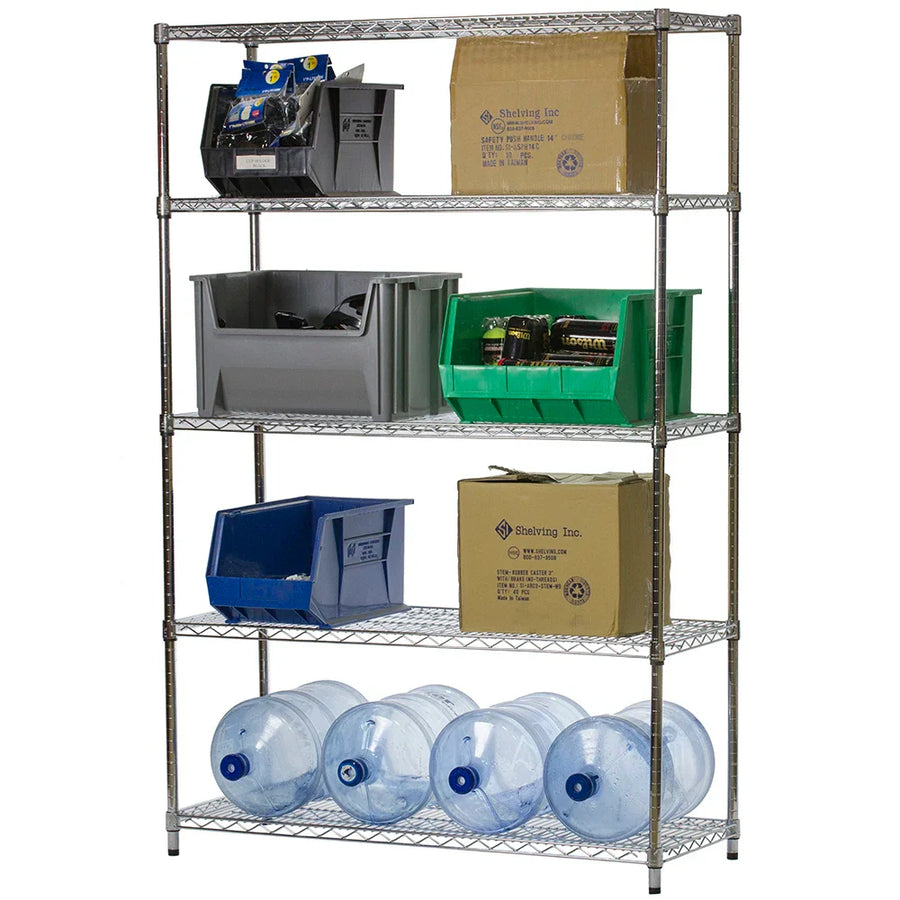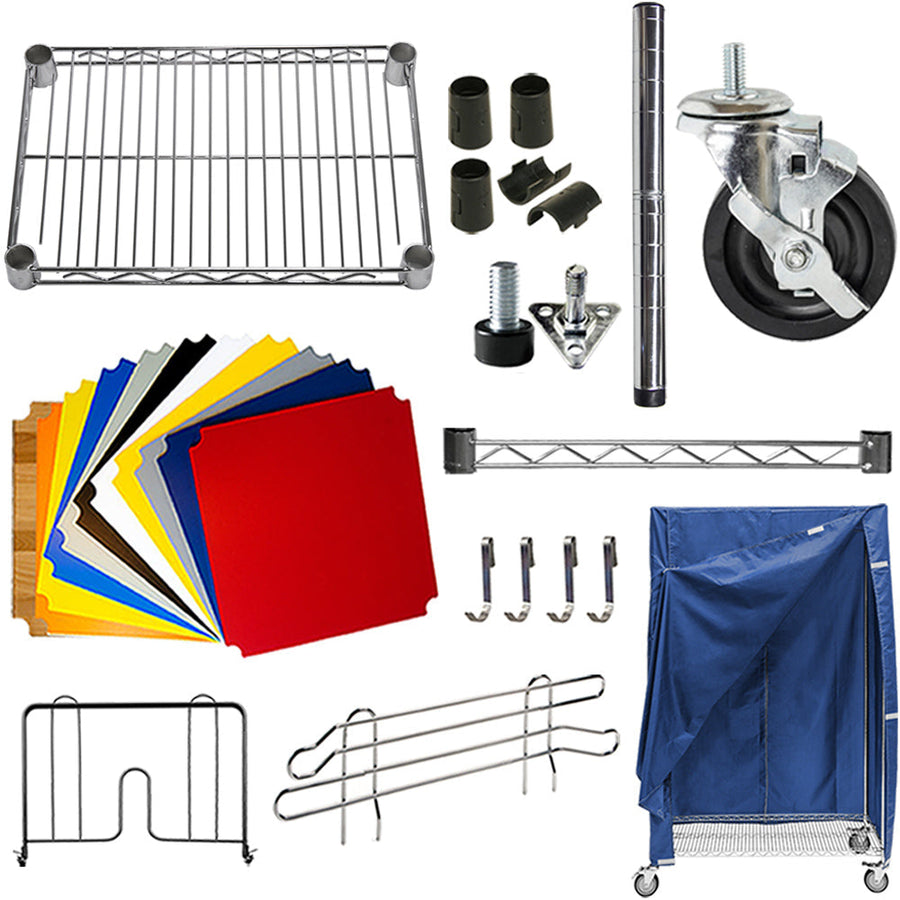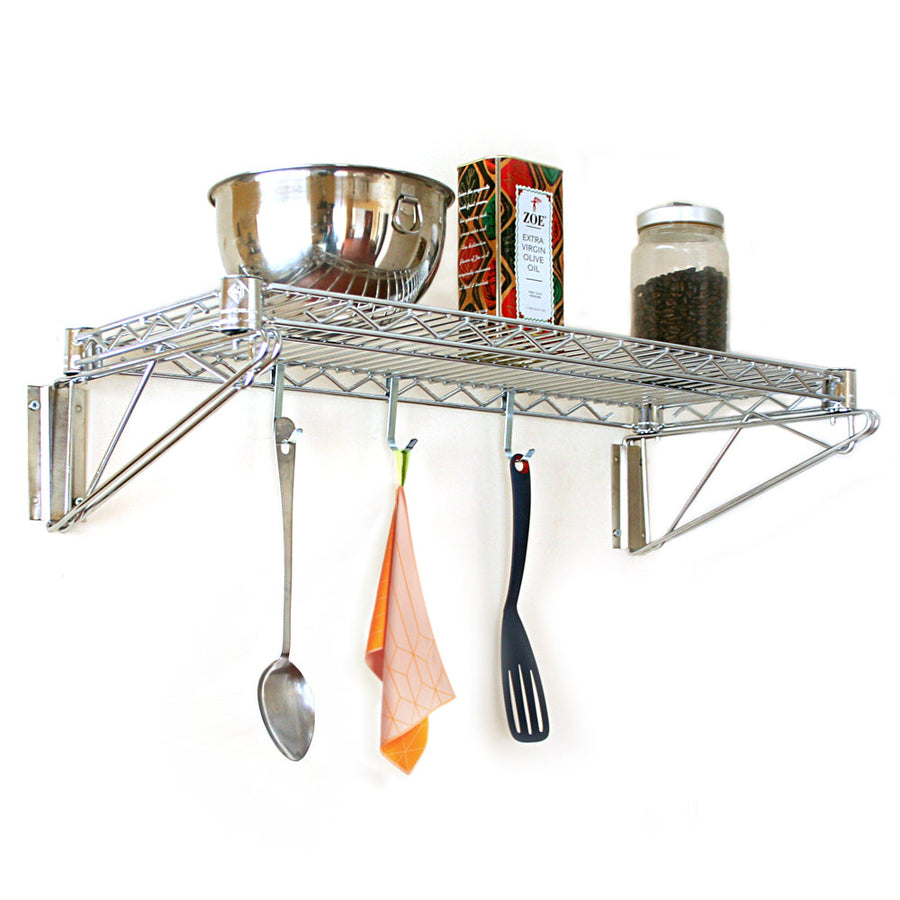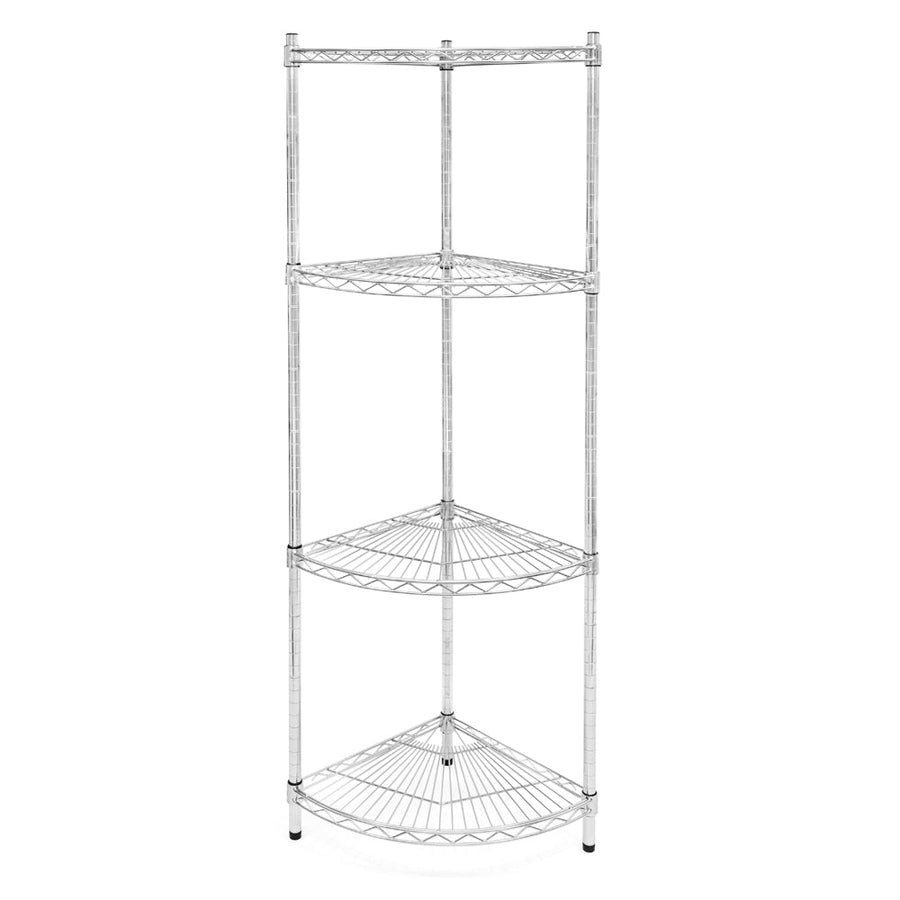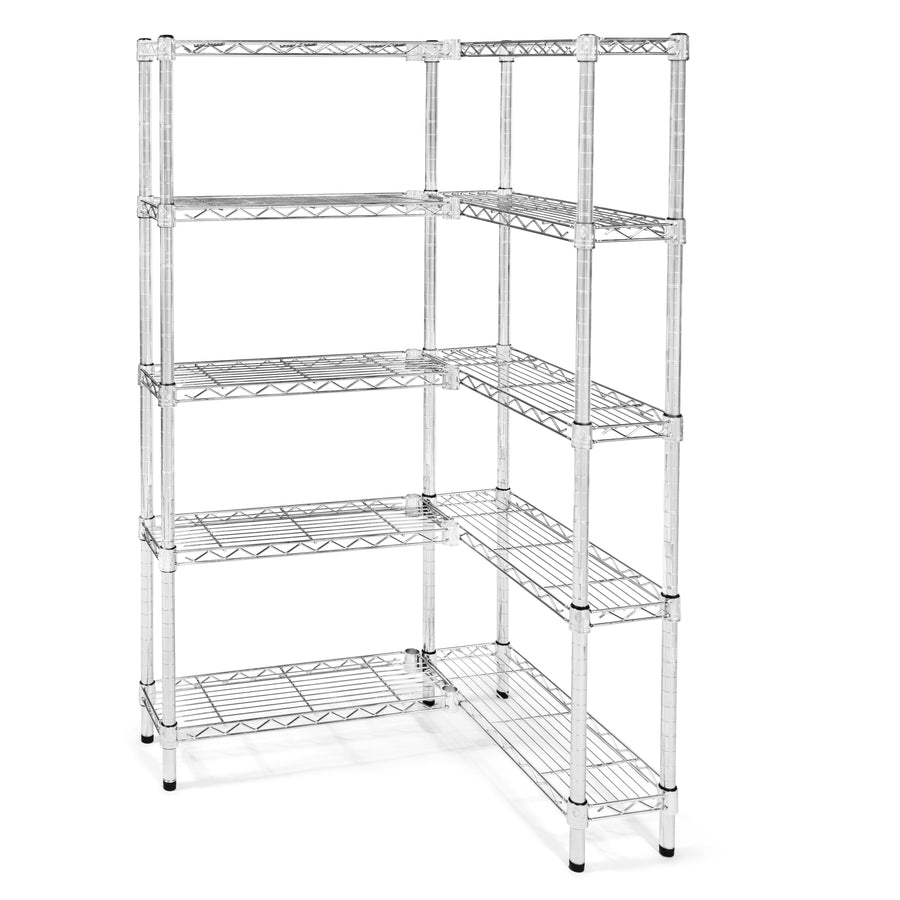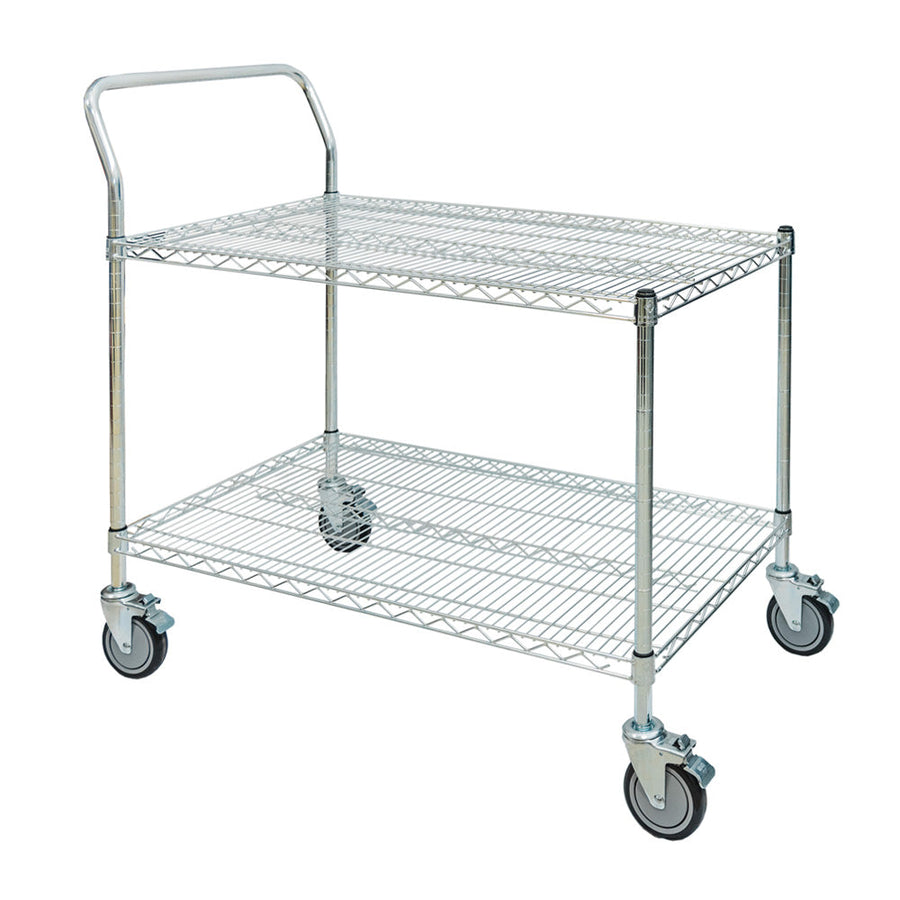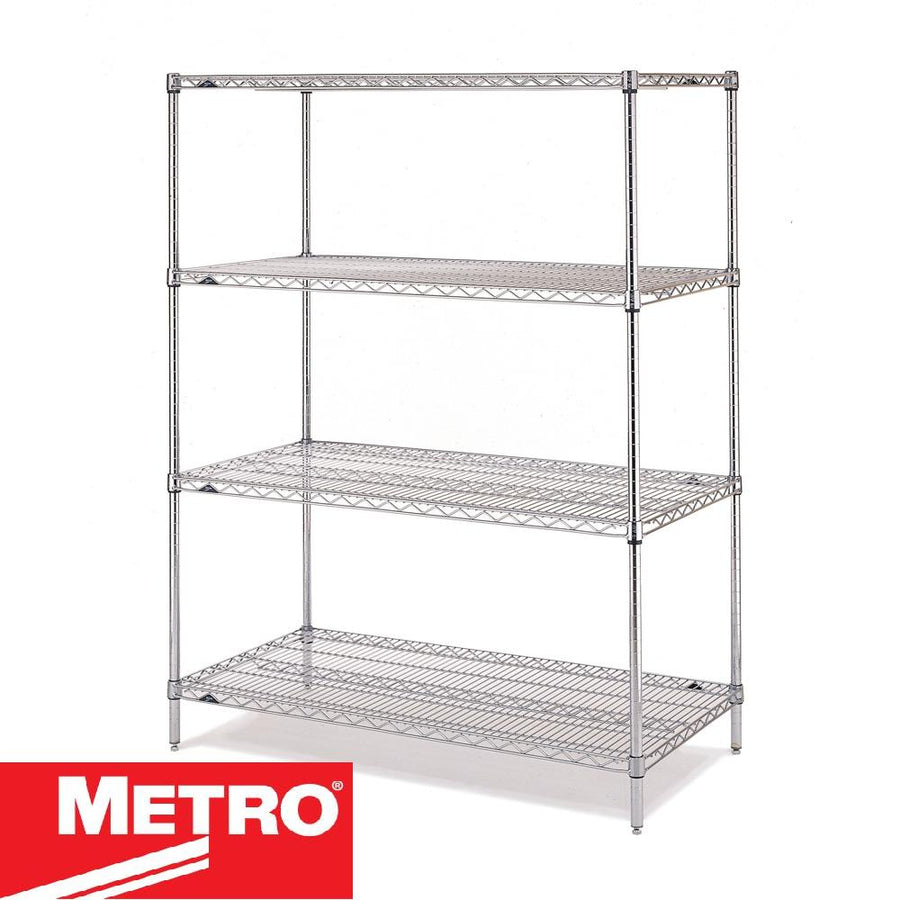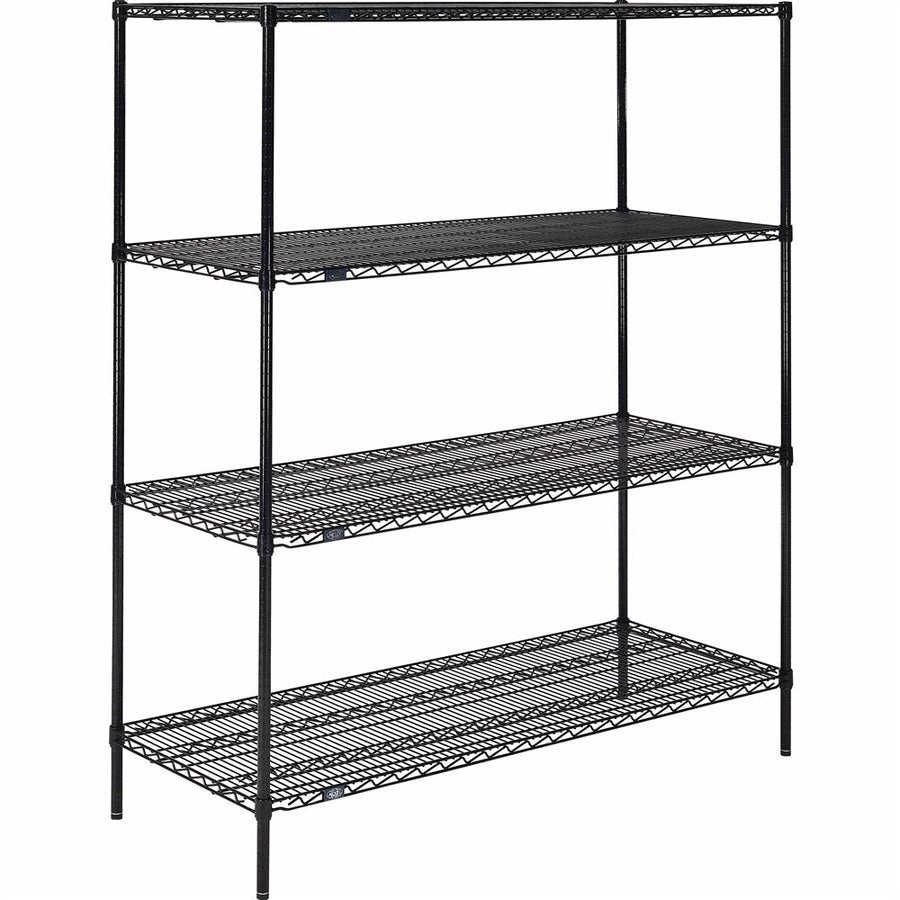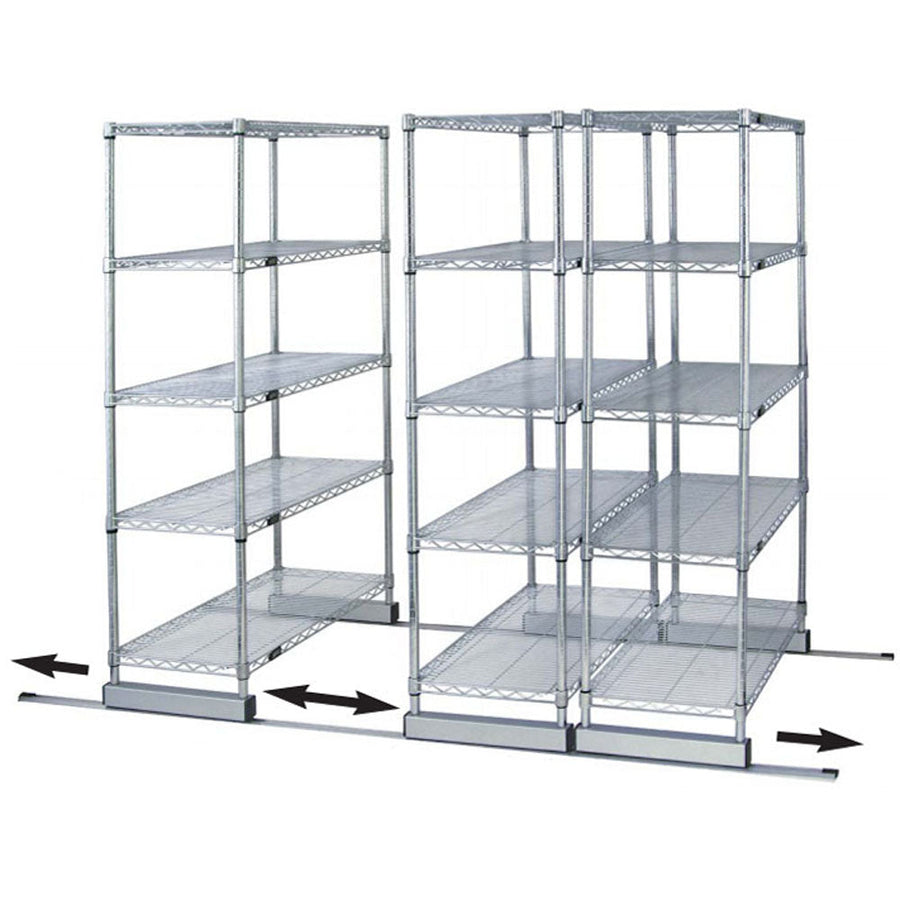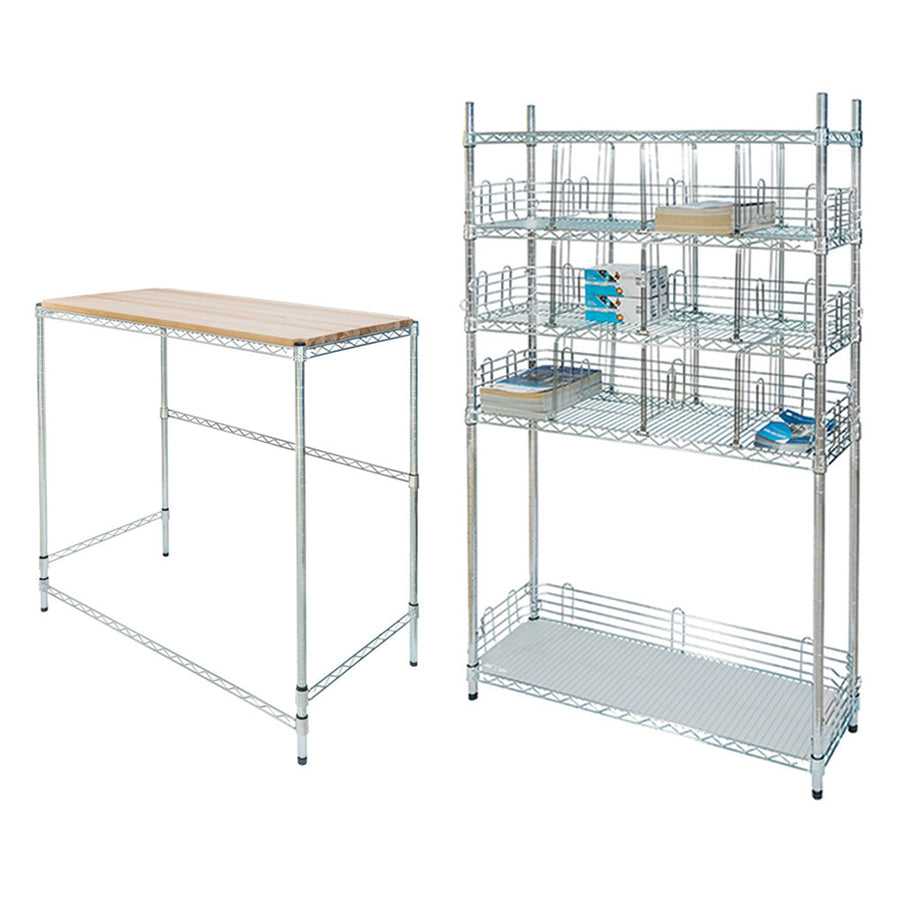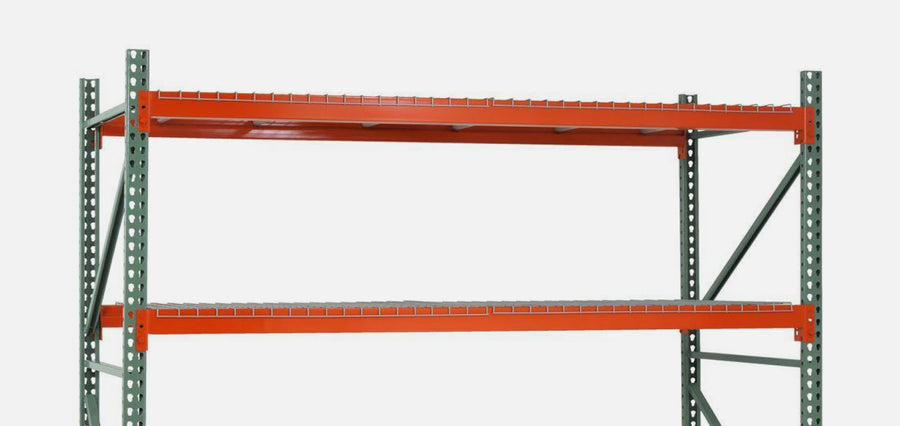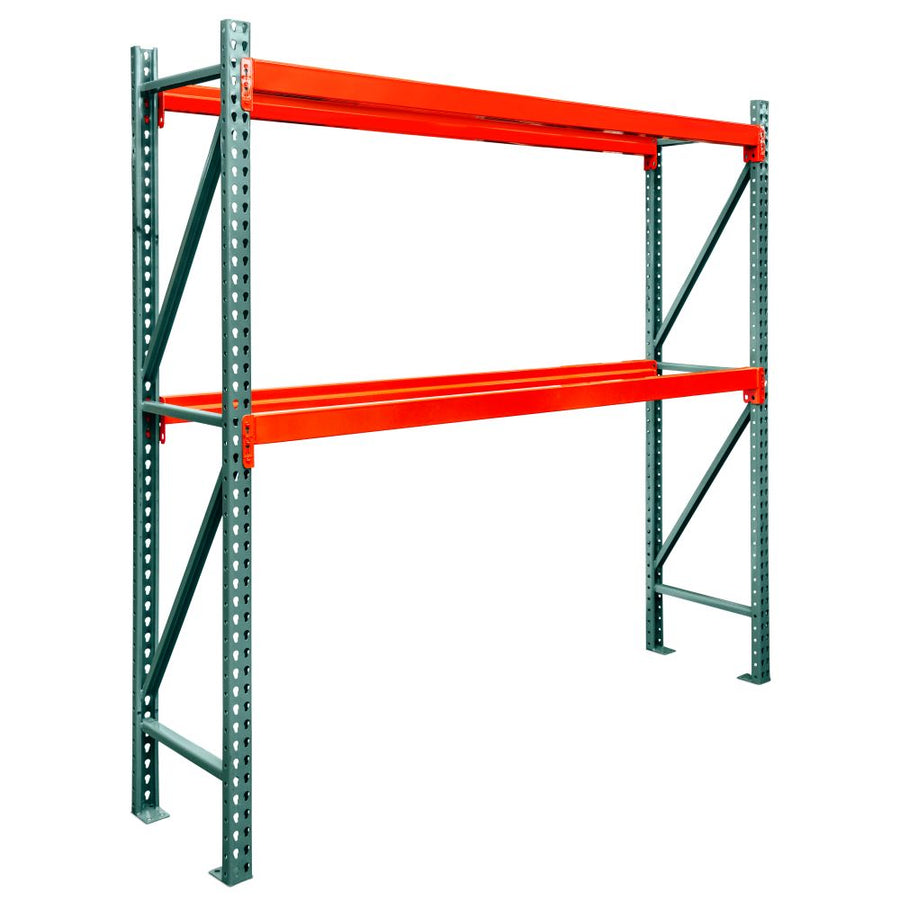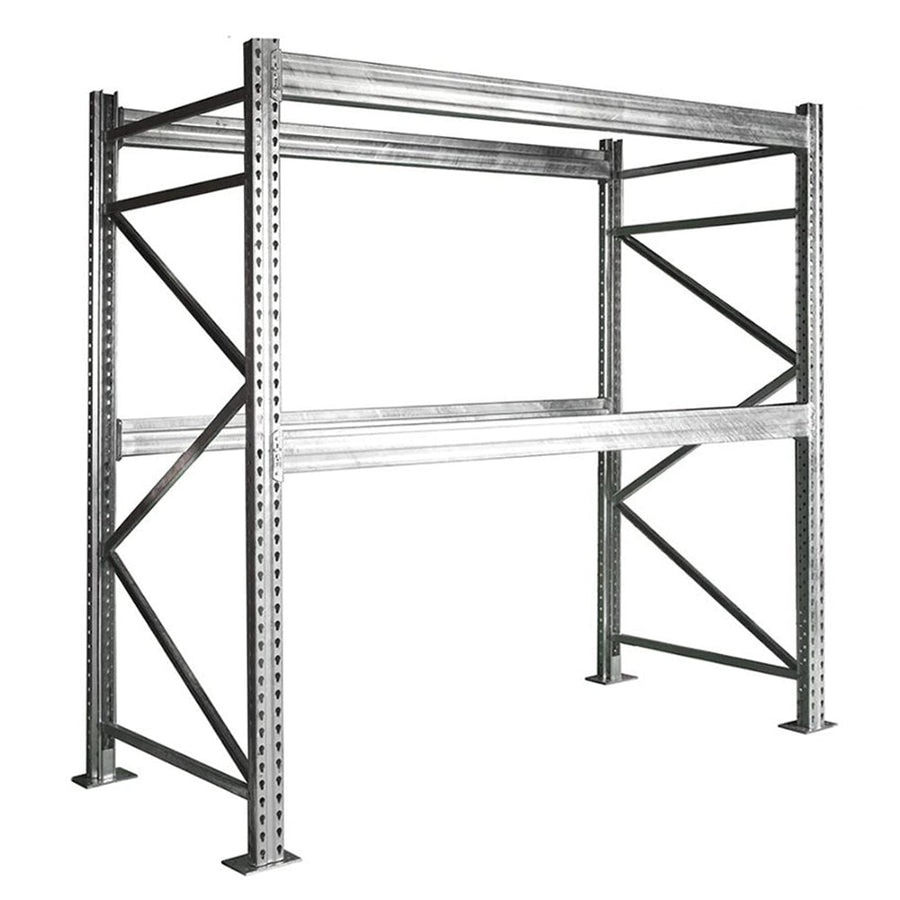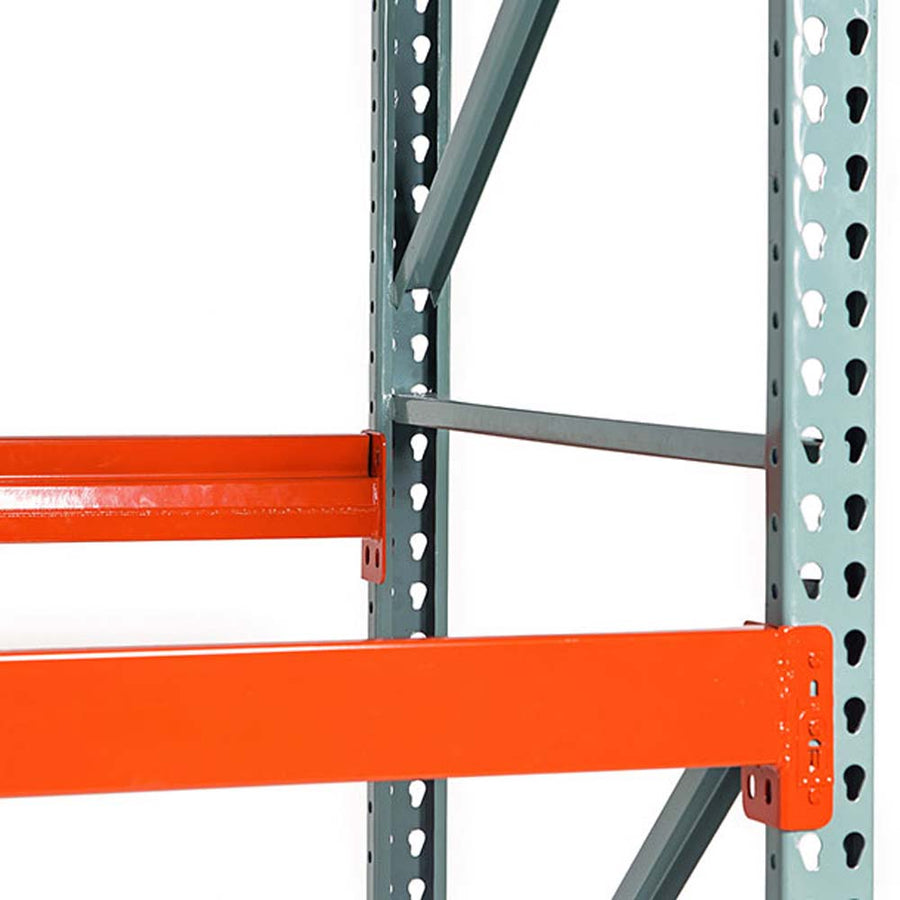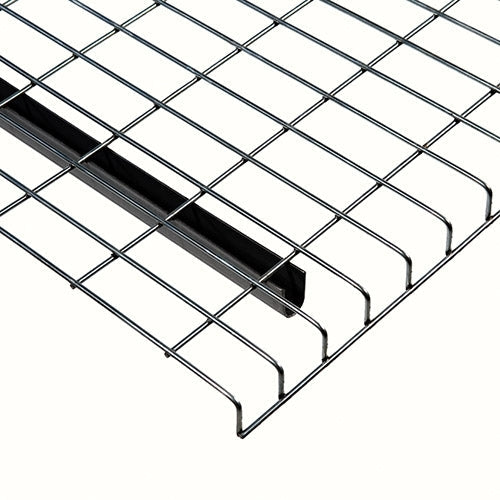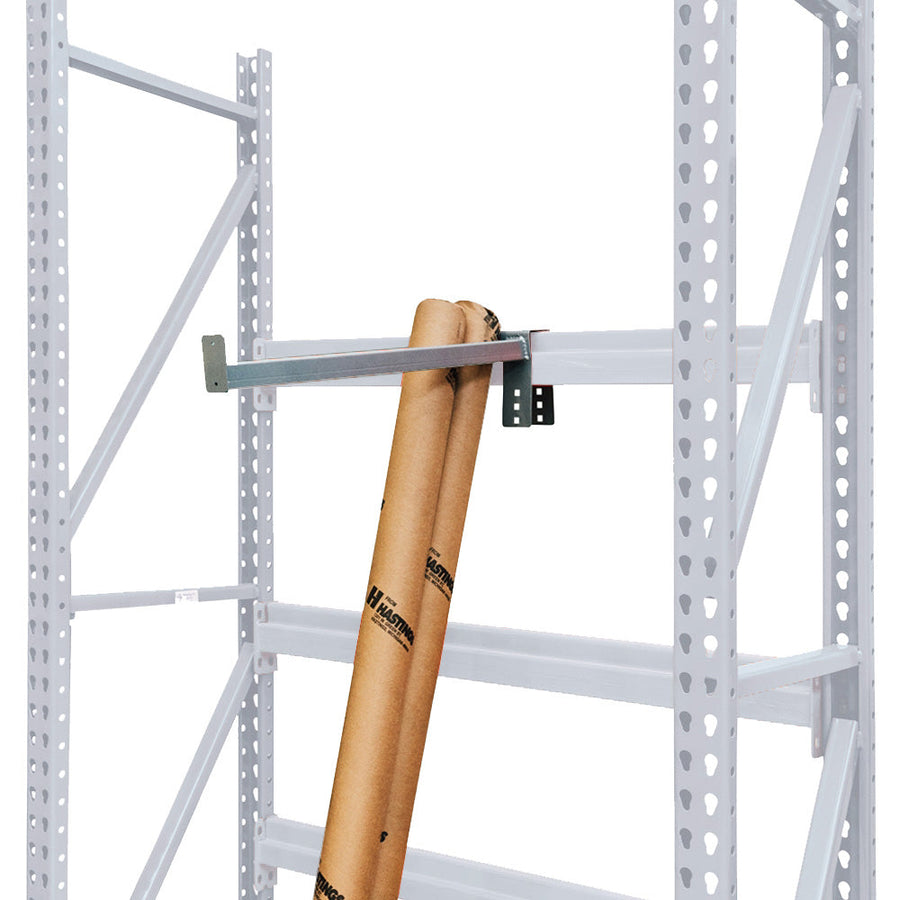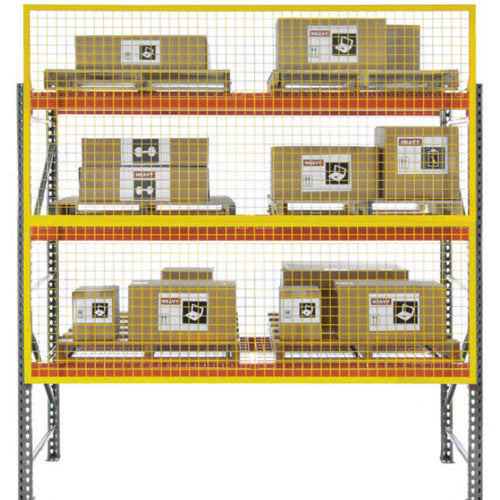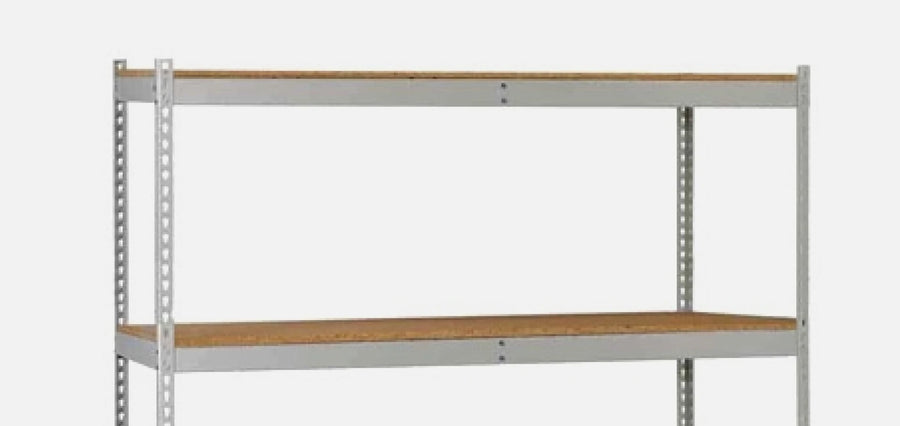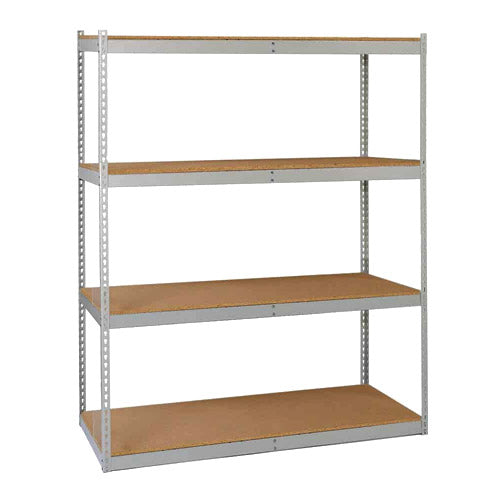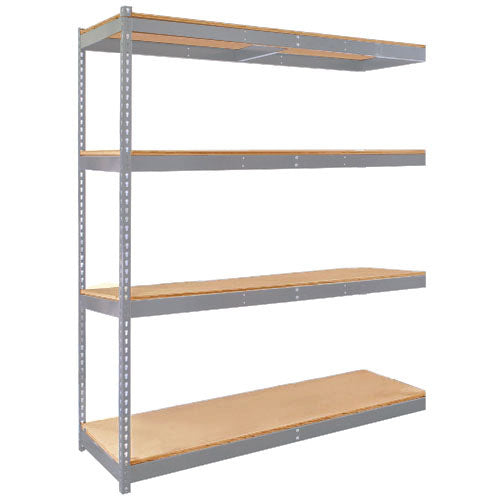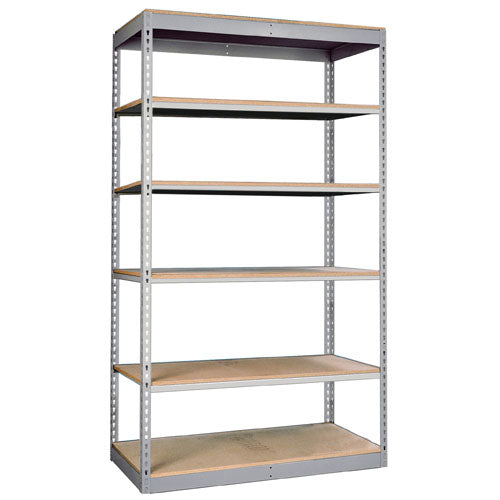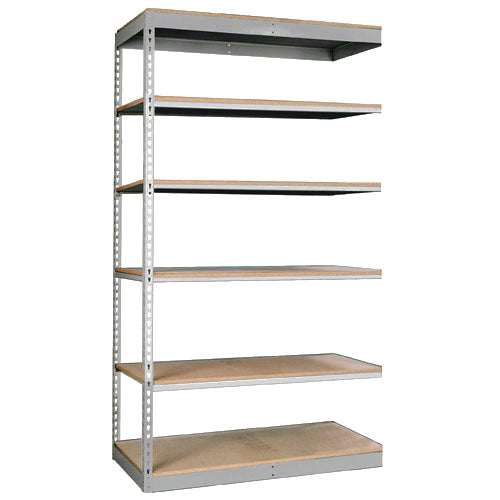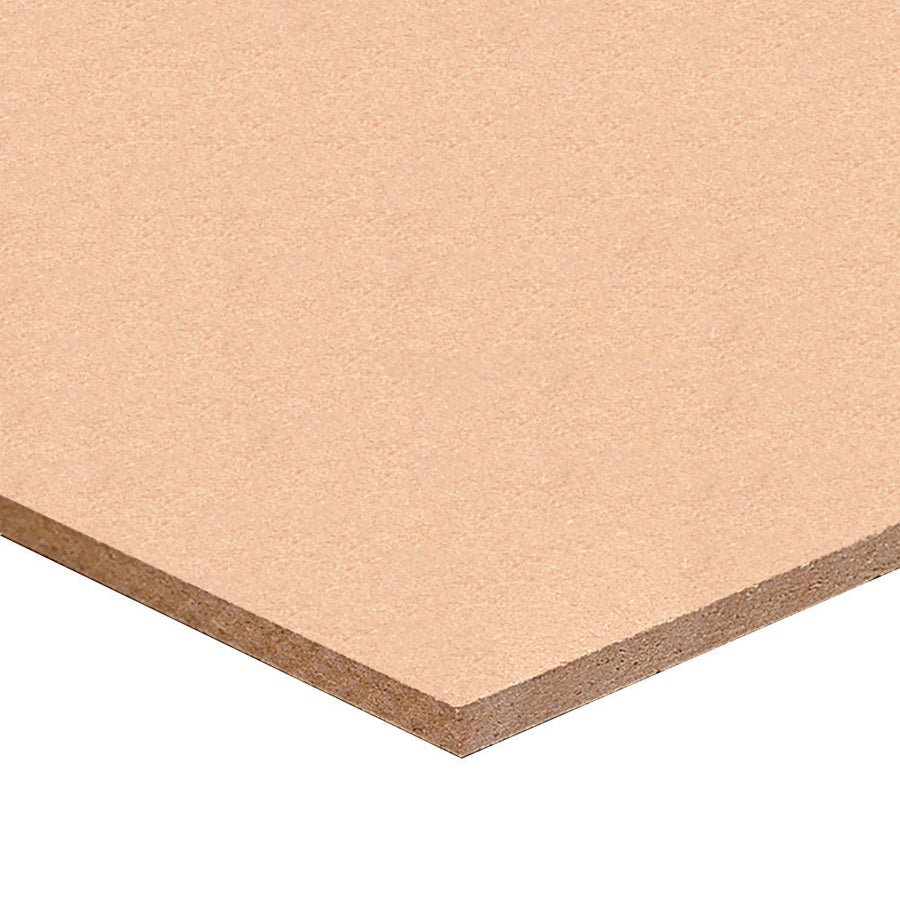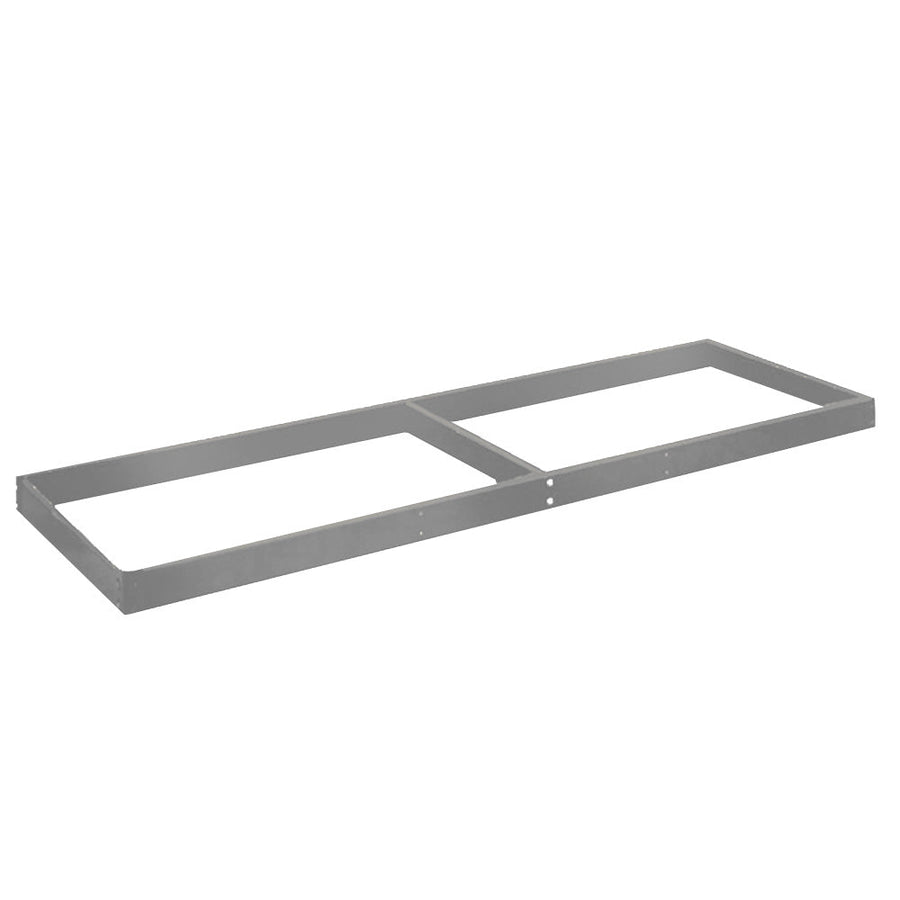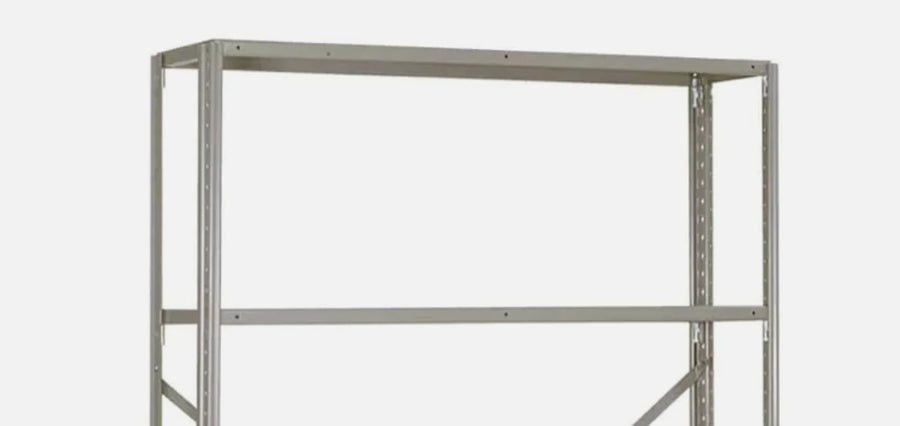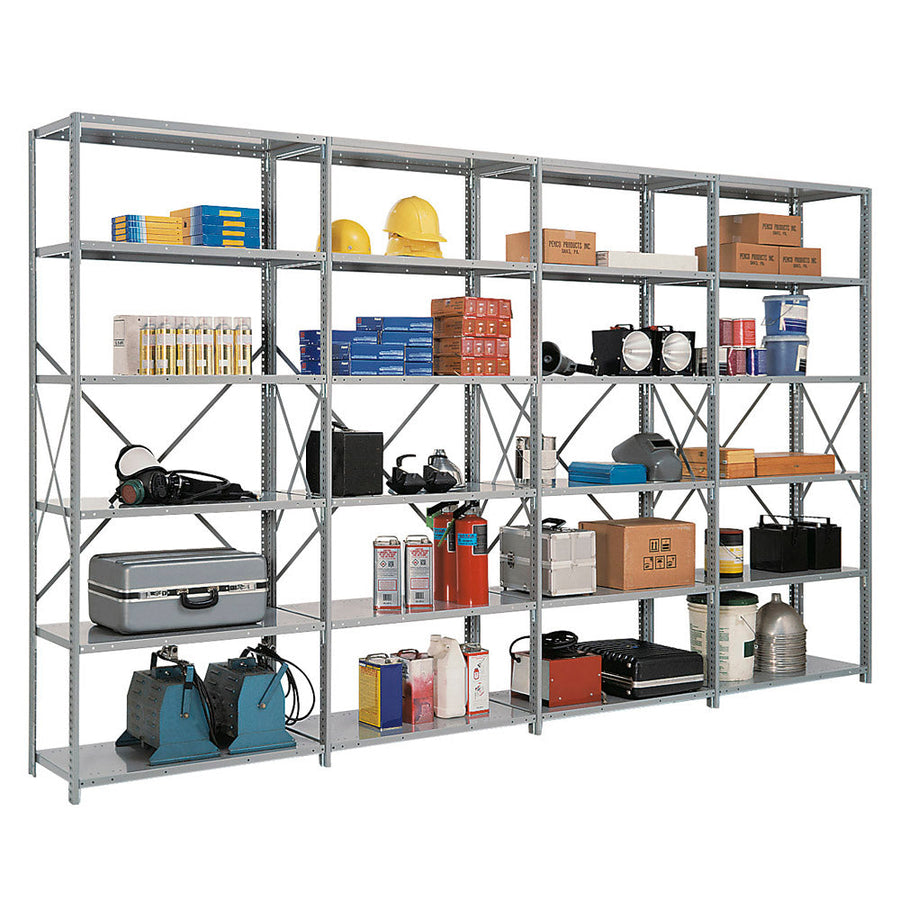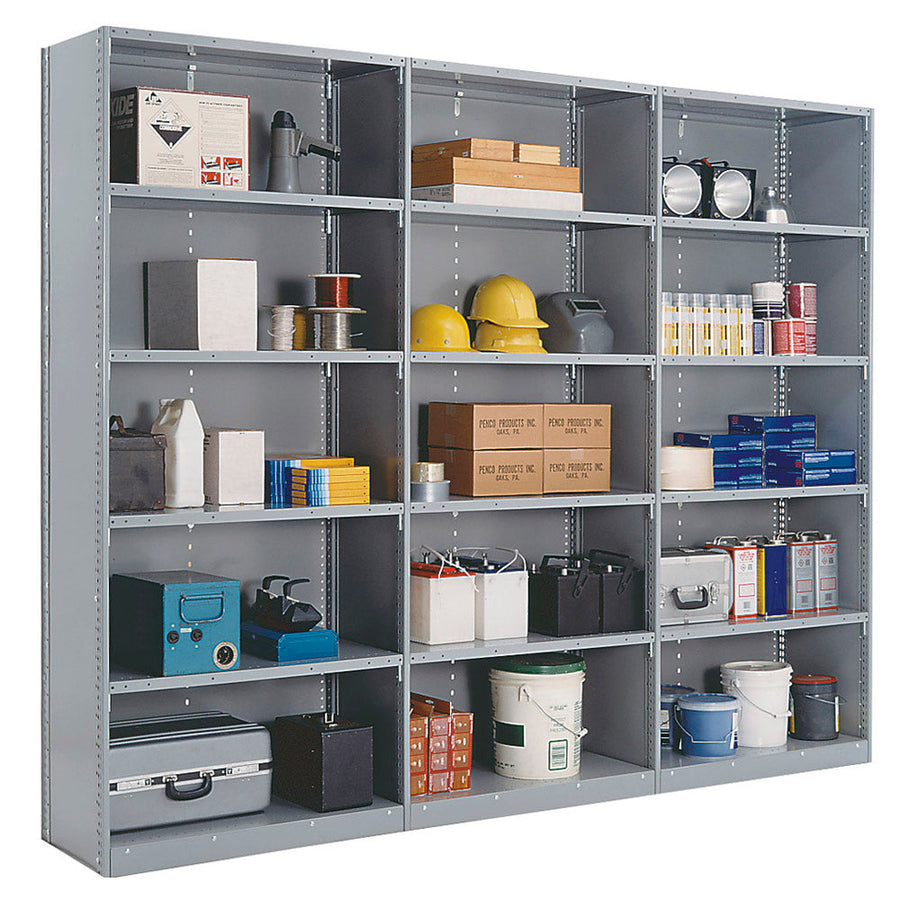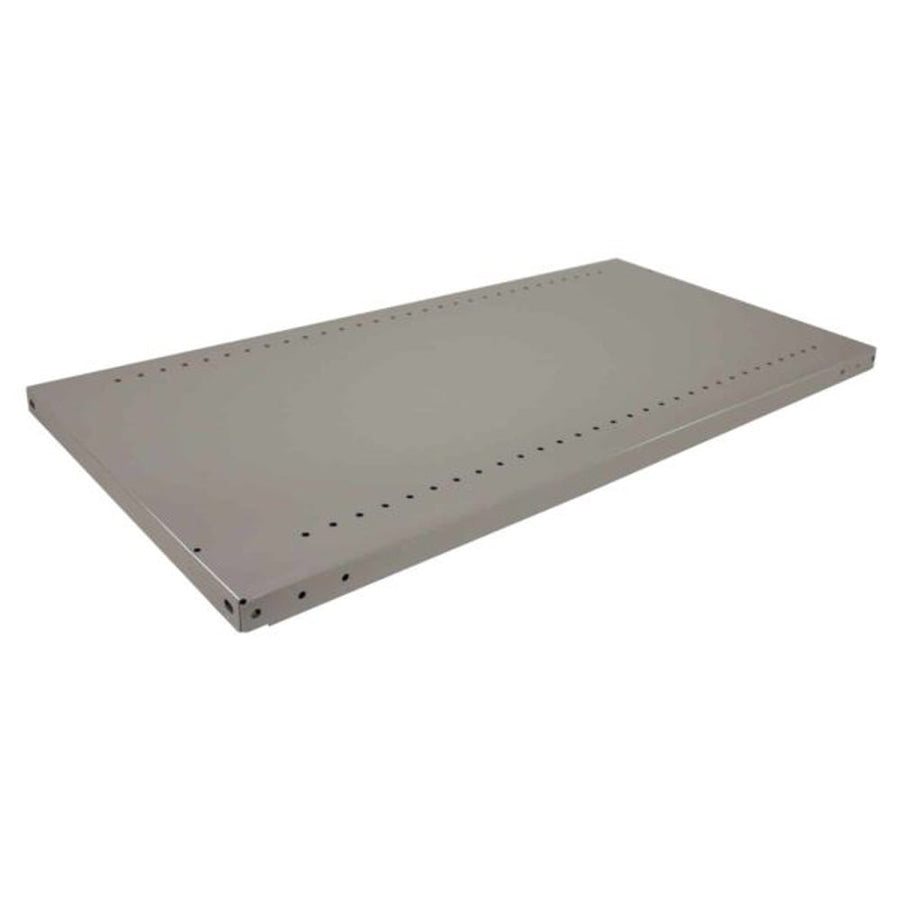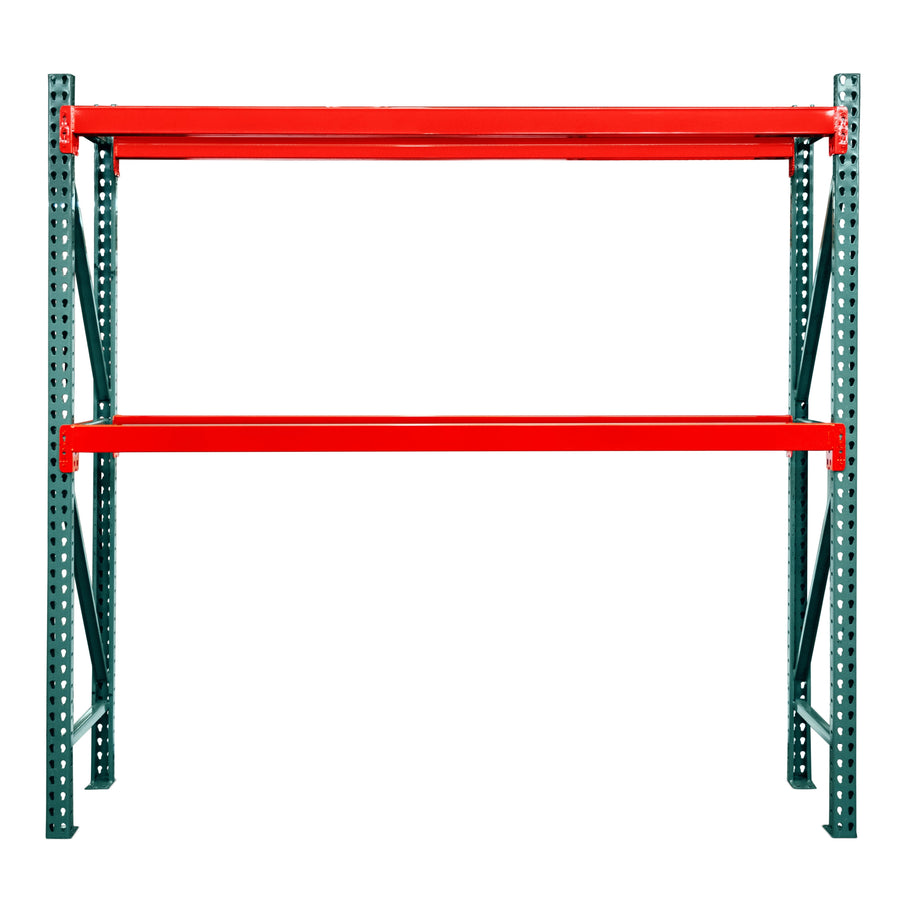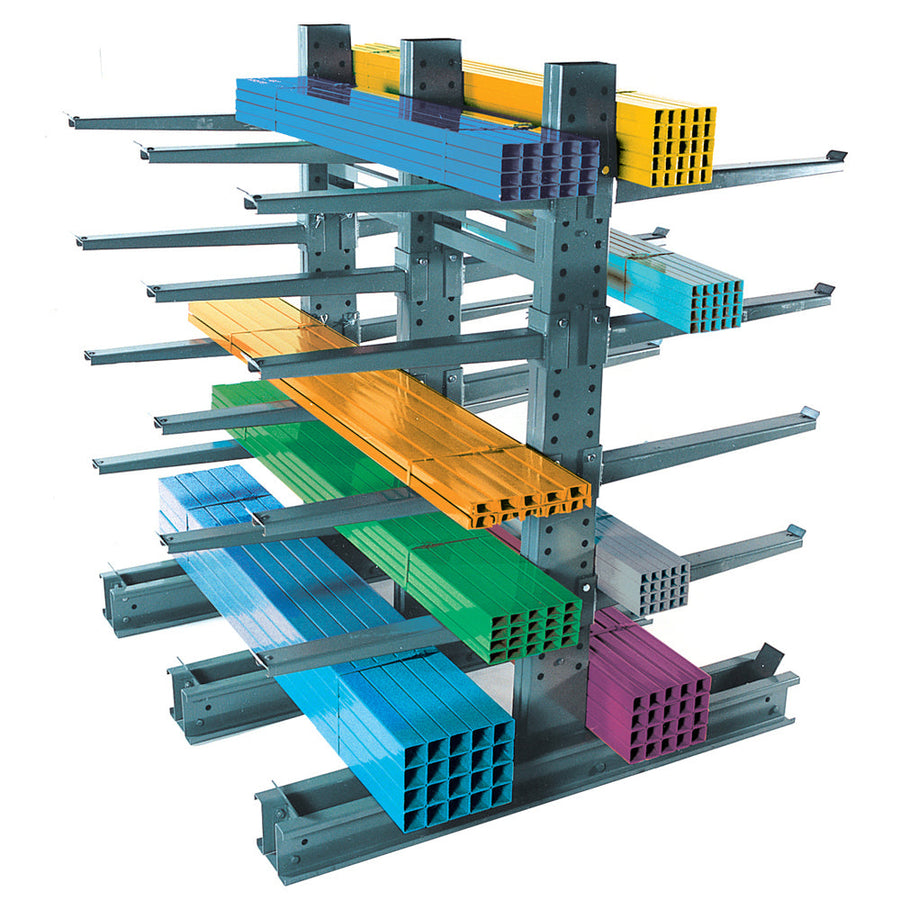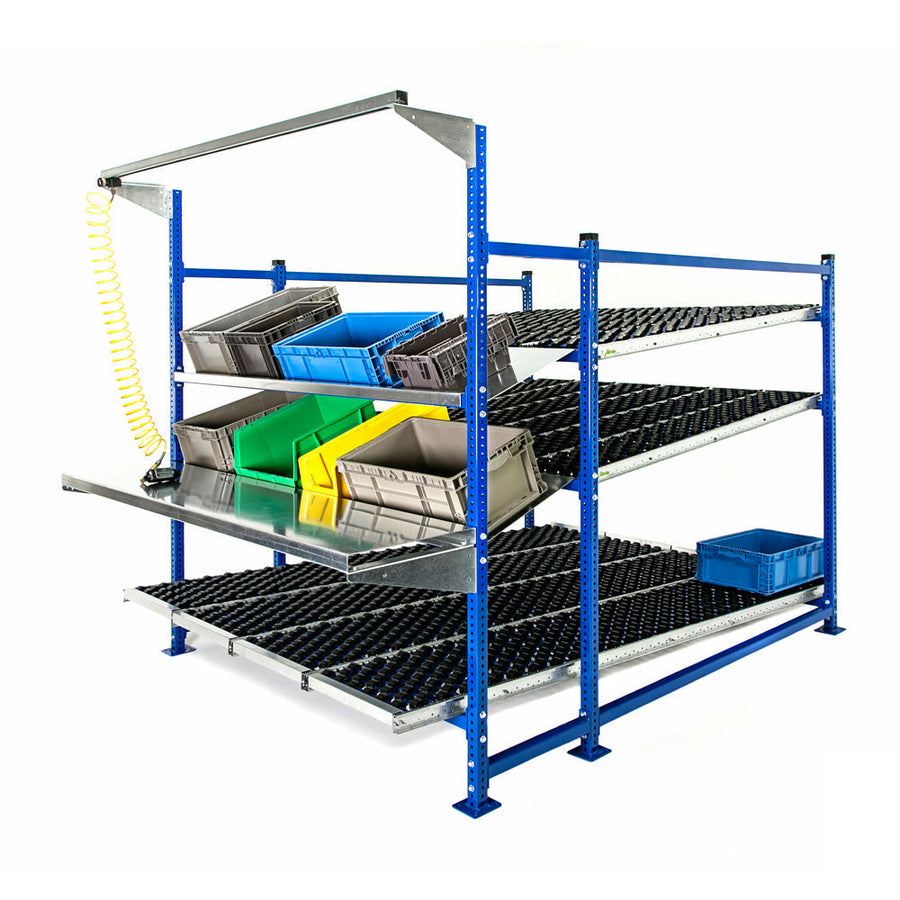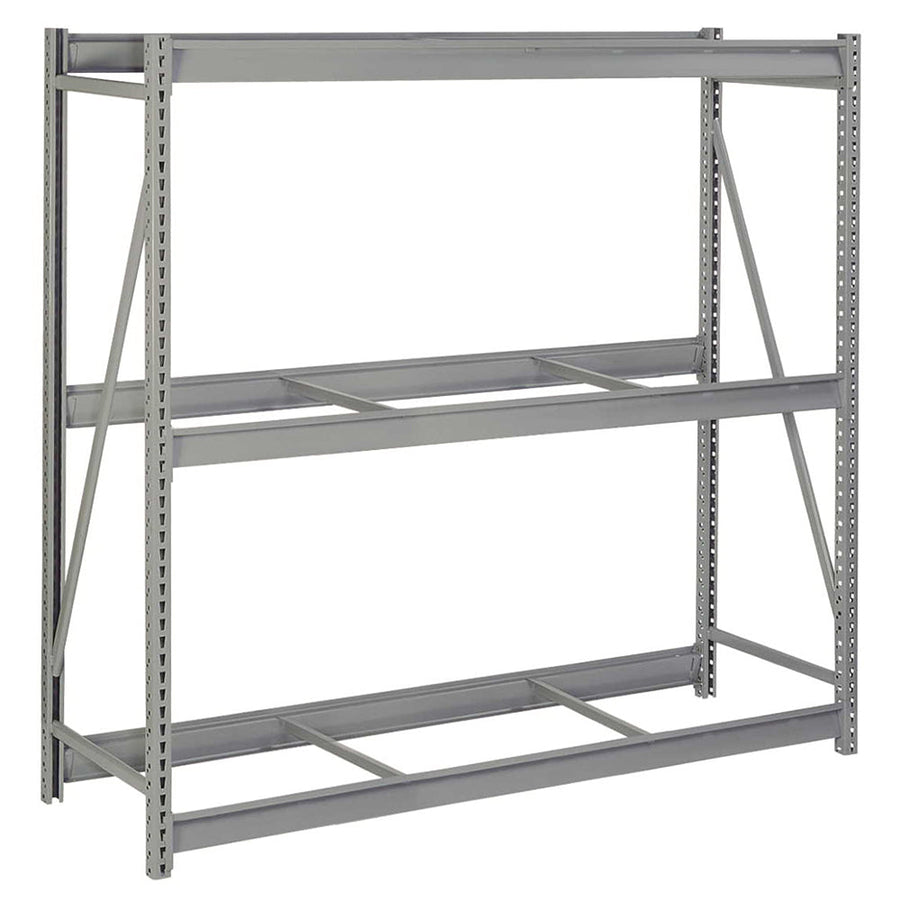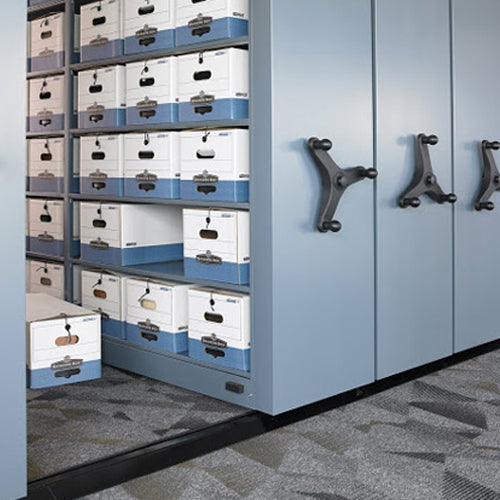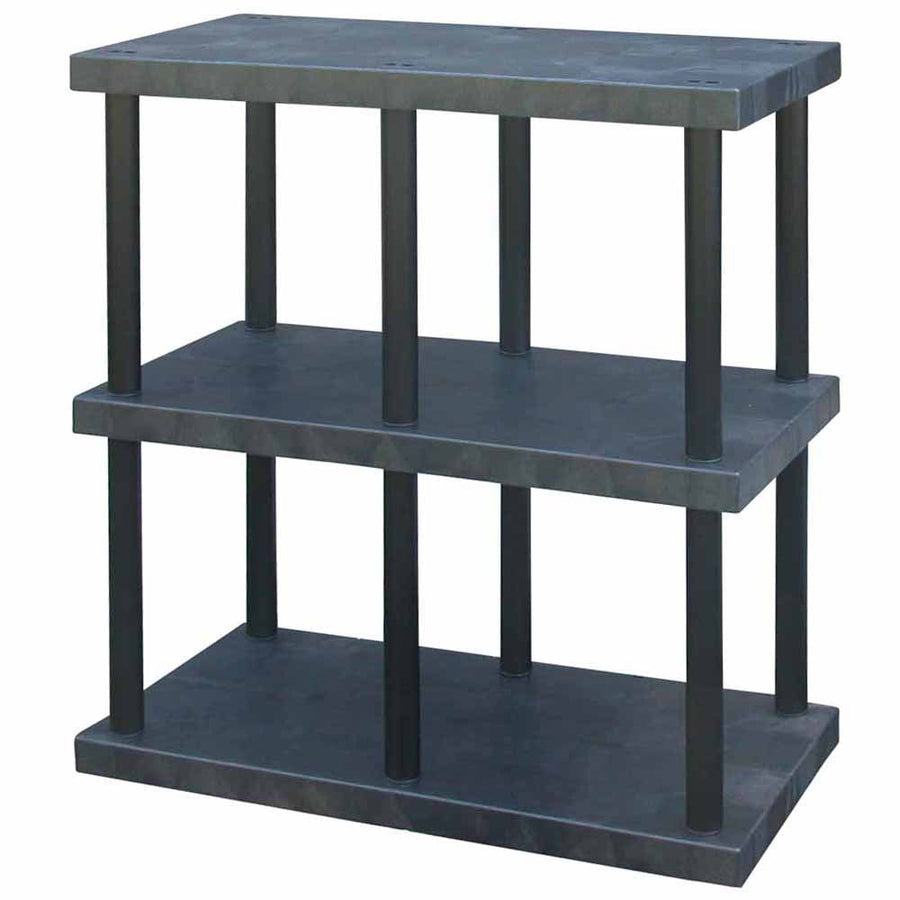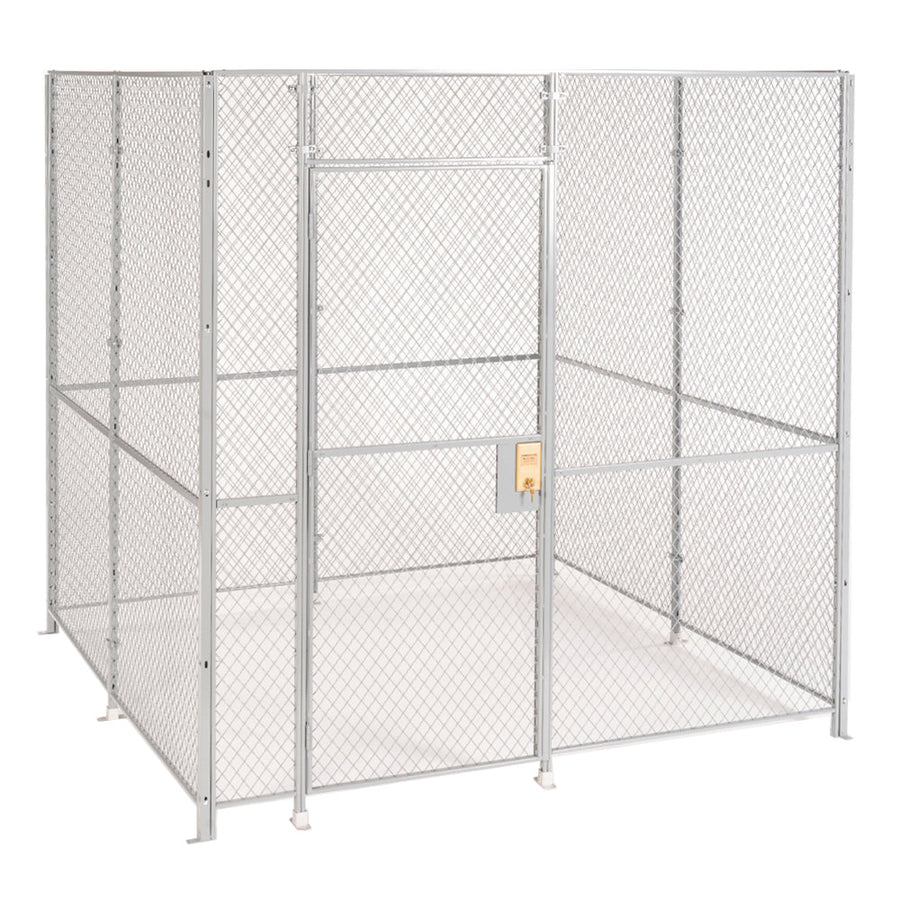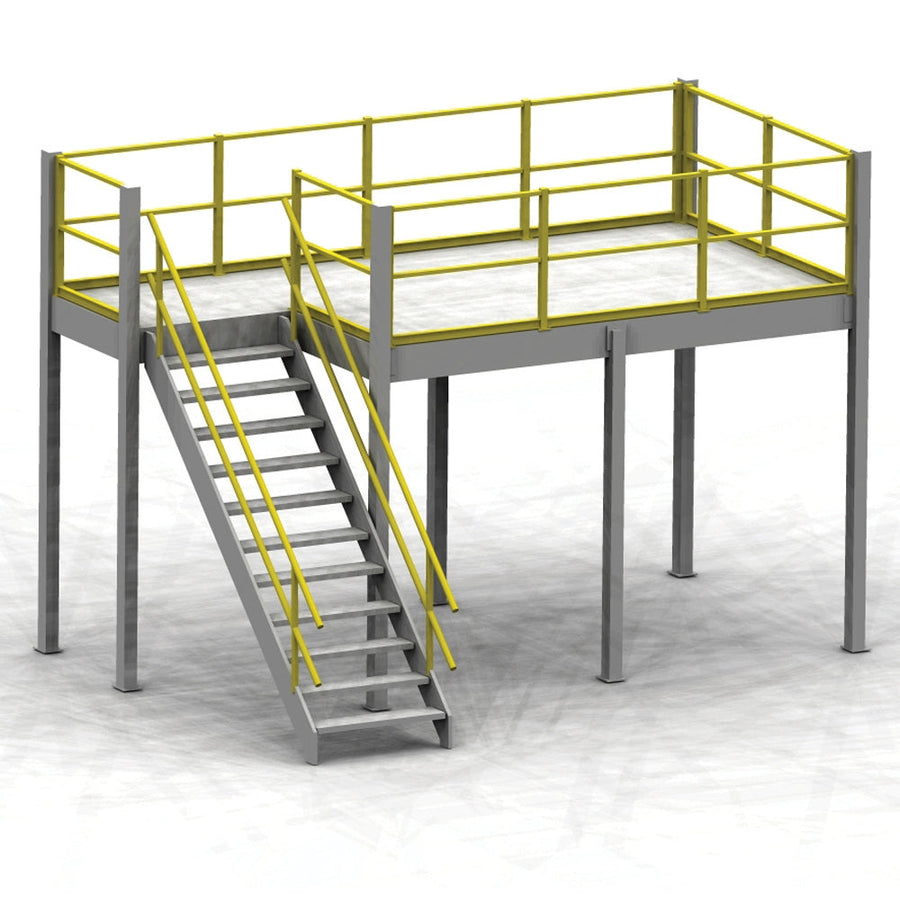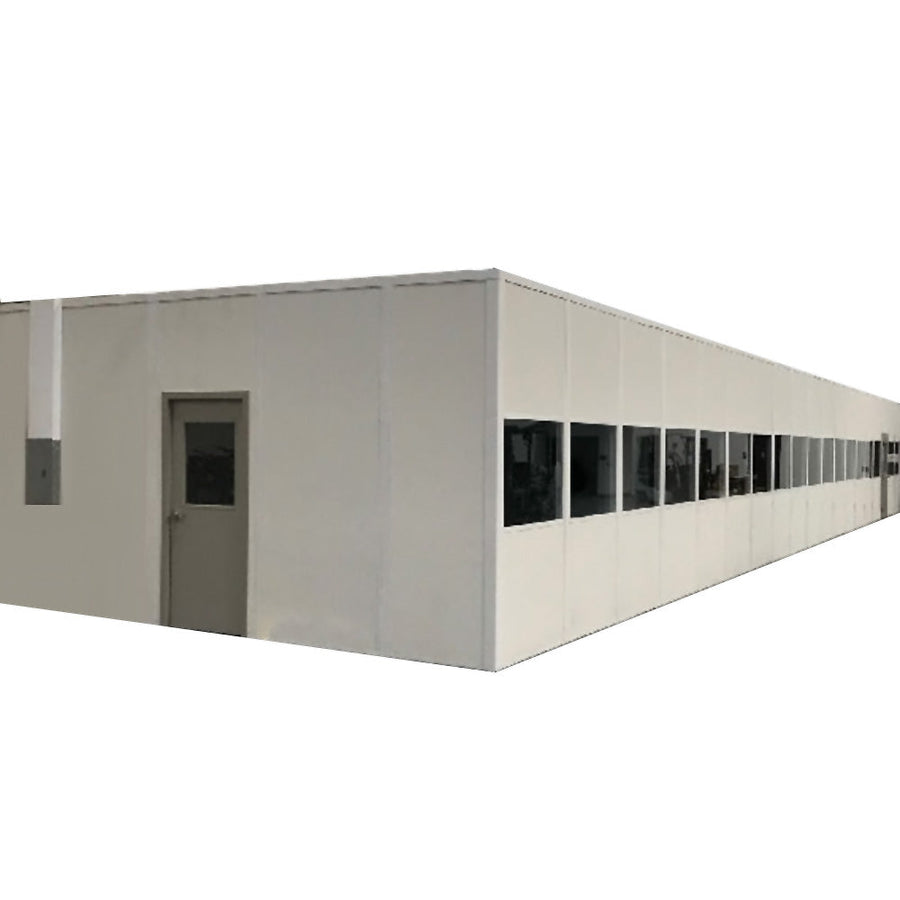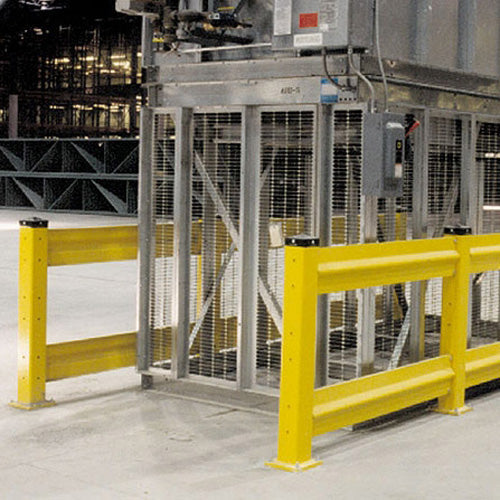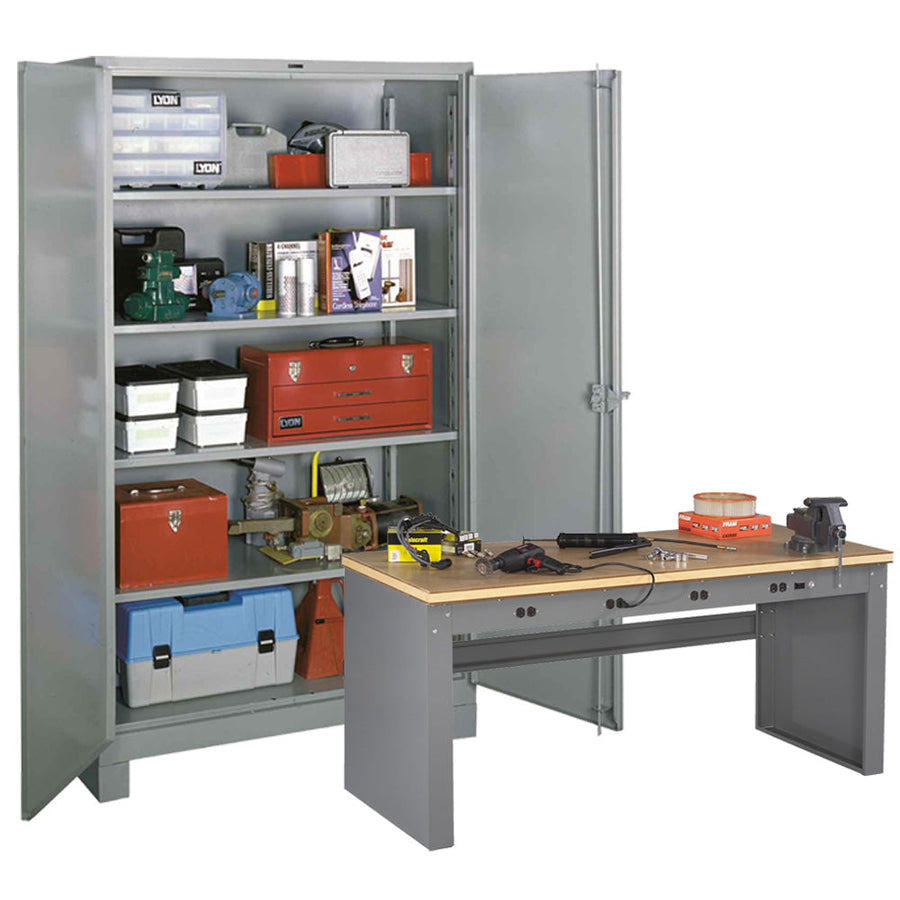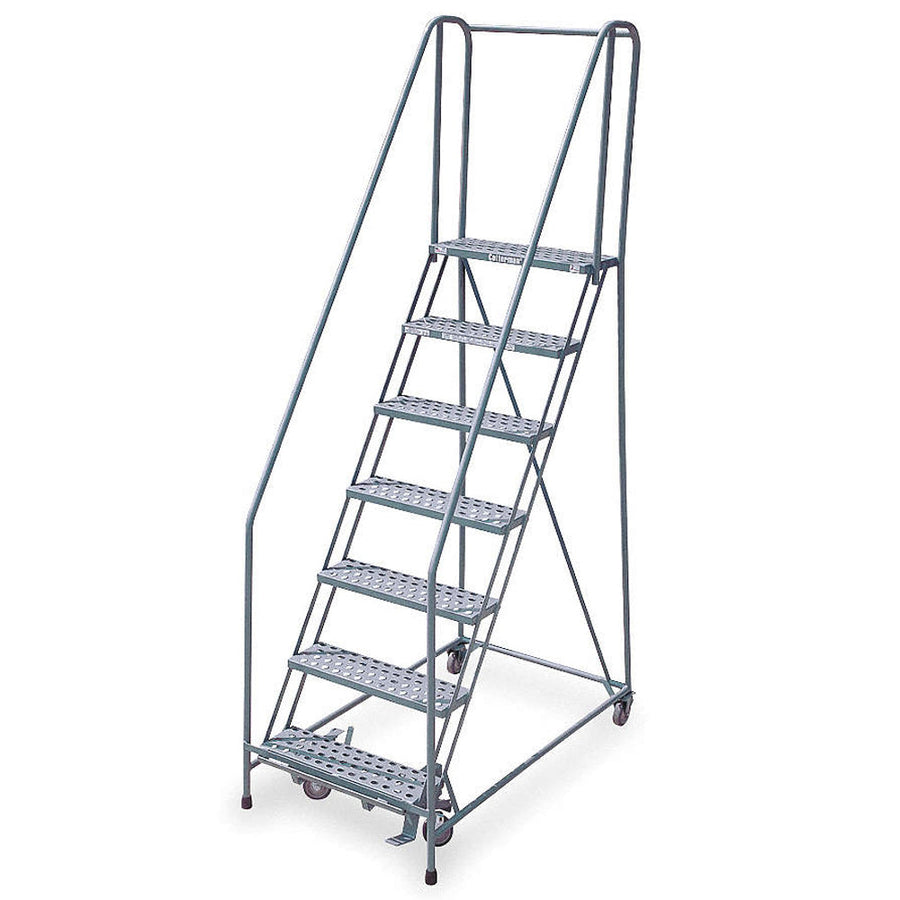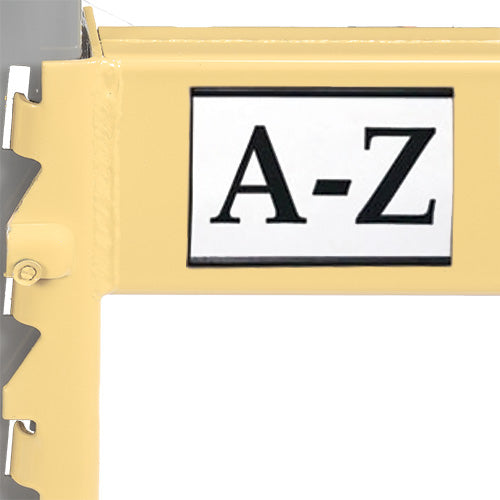When it comes to choosing industrial or commercial shelving, two of the most common options are boltless rivet shelving and clip shelving. Both are durable, versatile solutions, but they serve different needs depending on your:
- storage environment
- load requirements
- adjustability preferences
Here's a detailed breakdown of how they compare so you can make the best choice of your space.
Clip Shelving: Precision & Strength for Heavy-Duty Needs

Clip shelving, often referred to as "clipper" shelving, is built for environments that require maximum shelf strength and easy configurability.
Key Advantages:
- Higher Shelf Capacity: Clip shelving is ideal when you need heavy-duty support. Its robust construction allows for higher weight capacity per shelf than boltless options.
- Superior Shelf Adjustability: Need to reconfigure your setup often? Clip shelving offers more flexible shelf adjustability with quick and secure changes using compression clips.
- Divider Compatibility: Unlike boltless rivet shelving, clip shelving allows you to add sliding dividers or button-fastened dividers to create built-in sections (perfect for small parts or SKU separation).
- Full-Shelf Accessibility: Choose box posts for the front of the unit instead of angled posts to eliminate obstruction and allow for full use of every inch of the shelf. No more catching boxes on corner posts!
- Optional Side & Back Panels: Add panels to prevent items from falling off or to create enclosed shelving units. Great for inventory protection or privacy.
Size Limitations:
Typically available in 3.5ft and 4ft widths, with depths up to 36".
Boltless Rivet Shelving: Versatile & Cost-Effective

Boltless rivet shelving is known for its simple assembly and low cost, making it a go-to solution for many warehouses, garages, and storerooms. It comes in single-rivet or double-rivet styles, depending on your load needs.
Key Advantages:
- Budget-Friendly: Single boltless rivet shelving is much more affordable than clip shelving, making it ideal for budget-conscious projects.
- More Size Options: Boltless shelving offers more flexibility in size, with shelf widths from 1ft up to 8ft (depending on single or double rivet) an depths from 1ft to 4ft.
- Decking Choices: Compatible with particle board, wire mesh, or even laminate decking for different environments, uses, and preferences.
- Open Access Design: Both the front and back of boltless shelving are unobstructed (no cross bracing), so you can load and unload from any side. This is especially helpful in central aisle placements or when access from both sides is required.
- Optimized Floor Space: Rivet shelving offers a good balance between weight capacity and footprint, maximizing vertical and horizontal storage.
Considerations:
- Shelf height adjustment isn't as easy as clip shelving. Shelves need to be removed and repositioned manually.
- Dividers aren't compatible with boltless shelving, so if compartmentalization is key, clip shelving is a better fit.
Final Comparison
If your top priority is:
- organization
- compartmentalization
- heavy-duty support
clip shelving is the better investment — especially in environments like warehouses, distribution centers, or anywhere SKU separation is essential.
If you need:
- affordable, flexible shelving
- maximum access
- wide range of size options
boltless rivet shelving is a smart, cost-effective choice.
Still unsure which option fits your needs? Contact the storage experts at Shelving.com! We'll help you design a system that maximizes your space and meets your load requirements.
FAQs: Boltless Rivet vs. Clip Shelving

